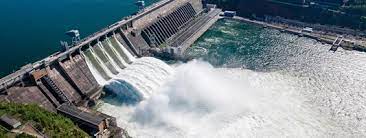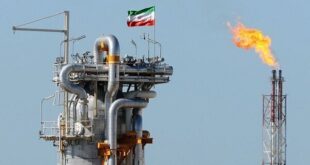Europe’s hydropower industry is flagging in the face of climate change and lack of support from policymakers, leaving a key low-carbon energy sector by the wayside.
“It was a thin, panicked chant,” wrote Christoph Ransmayer, recalling when Austria’s biggest hydropower dam flooded its reservoirs in 1949 for the first time. “It was the death cry of the rats,” he added in his 1985 novel “Kaprun”. The rats’ death were just another chapter in the dam’s storied past.
In May 1938, a certain Hermann Göring kicked off construction of what would become one of Austria’s national symbols. Now the time of Austrian sloppiness and coziness was over, he said, shortly after Germany swallowed the tiny alpine country.
A decade later, now under American stewardship, the project was almost completed. The rats had been drowned. At least four hundred primarily Soviet prisoners of war, put to work on the dam by the Nazis, lay dead. Today, a monument reminds of their sacrifice – erected at the behest of Nikita Khrushchev.
Austria, in turn, became able to harvest the seemingly infinite energy flowing through the alps.
Few care to remember nowadays that it was the Nazis who did about a third of the work in Kaprun – a dam that quickly became a symbol of engineering ingenuity and a resurging Austria.
Without its completion in 1955, the country would have struggled to match its fellow European countries amid a surge of energy-intensive re-industrialisation.
Not all European hydropower dams have such a troubling past. But all of them have a bleak future nonetheless.
While European leaders would love to engineer a bout of reindustrialisation similar to the 1960s, hydropower is no longer in a position to underpin this push.
Instead, despite being crucial to the EU’s green energy transition, the hydropower industry flounders as costs rise and political appetite to back the technology is rare.
When the first hydroelectric facility was constructed in France in the early 1800s, few would have imagined where hydropower would flourish today: Asia, Africa, and South America quickly outpaced the former pioneers in Europe.
The pipeline for new hydropower dams on the old continent is paltry. Of the 17.6 GW of traditional capacity planned until 2037, 40% is located in Eastern Europe – including Ukraine, according to a 2023 report from the International Renewable Energy Agency (IRENA).
The current pumped hydro capacity – the world’s most prevalent “green” batteries that are adept at storing energy in times of plenty and releasing in times of need – sits at 28 GW. Rich countries like Austria and Switzerland lead the charge on doubling this until 2037.
Proponents of hydroelectric power say that pumped storage facilities will be a key driver of flexibility in a climate-friendly electricity grid. Detractors worry that invaluable natural habitats will be bulldozed in the name of erecting towering hulks of cement.
Smaller ones, although not nearly as imposing, can pose a nearly insurmountable barrier to fish migration. And the troubles don’t end there.
In practice, the very phenomenon that hydropower ought to help avert may spell its demise. Climate change, and the uptick in extreme weather events, particularly droughts, have given European hydropower a bad start in this decade.
The 2022 energy crisis was exacerbated by a summer drought that played into the hands of Russia’s Vladimir Putin – limiting the EU’s hydropower generation capacity right when the Kremlin was using its abundant gas supplies to blackmail Europe.
This year has been middling at best, as hydropower continues to lag behind historic pre-pandemic levels.
Dams have also once more been exposed as military weak points.
The destruction of the Kakhovka dam, likely by Russia, killed at least 50, injured hundreds, and shone a spotlight on the fact that military conflict tends to focus around centrally organised structures like dams. A clear downside compared to decentralised “new” renewables like wind and solar.
Hydropower’s woes don’t end there. The long-term alpine hydropower outlook, where much of Central European electricity is produced, is far from rosy.
Its ability to generate electricity is directly tied to water – a resource that is undergoing momentous change as it becomes scarcer in some places and less readily available amid rapid glacier melting.
In the short term, experts estimate that melting glaciers will see dams overflowing – necessitating a costly expansion of the structures – before melt-water volumes eventually decline, reducing river flows and potential storage capacity. But few dare to make predictions beyond 2100, when all Europe’s glaciers will have virtually disappeared.
One thing is certain: water in general is expected to become more scarce in Alpine regions as a direct consequence of glacier melt. Large hydropower dams, while playing a role in regulating water flows in downstream rivers, could also become a part of the problem, as open reservoirs are prone to evaporation.
Part of the blame for the current situation lies with political realities. Europe’s green parties opt for wind turbines and solar panels over hydroelectric power, given the toll on Alpine environments.
The construction of cement “monstrosities” in the Alps speaks to the instincts of the right – just think of the Nazis and their expression of Aryan vitality through Austria’s Kaprun dam. Yet, modern right-wing parties tend to favour nuclear as their preferred energy source.
A systematic failure to lobby adequately is also apparent. While solar and wind have spawned powerful and well-connected lobbying groups, the interests of the hydropower industry are barely represented in Brussels.
To this day, the European Commission’s official hydropower page links to the defunct site of Hydropower Europe, which has since been supplanted by an EU-funded platform called ETIP Hydropower.
Beyond providing a base level of funding, the Commission has been treating hydropower like an unloved stepchild. While novel renewables benefit from dedicated strategies and are featured chiefly in the EU’s new industrial policy push, hydropower was conspicuously absent from the Commission’s proposal for a Net Zero Industry Act.
Lest we forget, some also blame hydropower’s troubles on Germany’s distaste for the technology.
The current situation is what happens when a mature industry is ignored due to ideological blinders on the side of their natural allies.
Yet hydropower represents a massive missed opportunity – stored hydropower plants, a mature and tested technology, represent one of the best energy storage options available today.
As hydropower expansion is flagging worldwide, Europe could once more lead the way. But IRENA’s report found that investments need to rise fivefold to double hydro capacity by 2050.
The wonks at the European Commission’s Joint Research Centre are aware of the issue, too. In a 2022 report, they called for policy support for pumped hydro. Europe only needs to heed their advice.

 Iran Energy News Oil, Gas, Petrochemical and Energy Field Specialized Channel
Iran Energy News Oil, Gas, Petrochemical and Energy Field Specialized Channel



